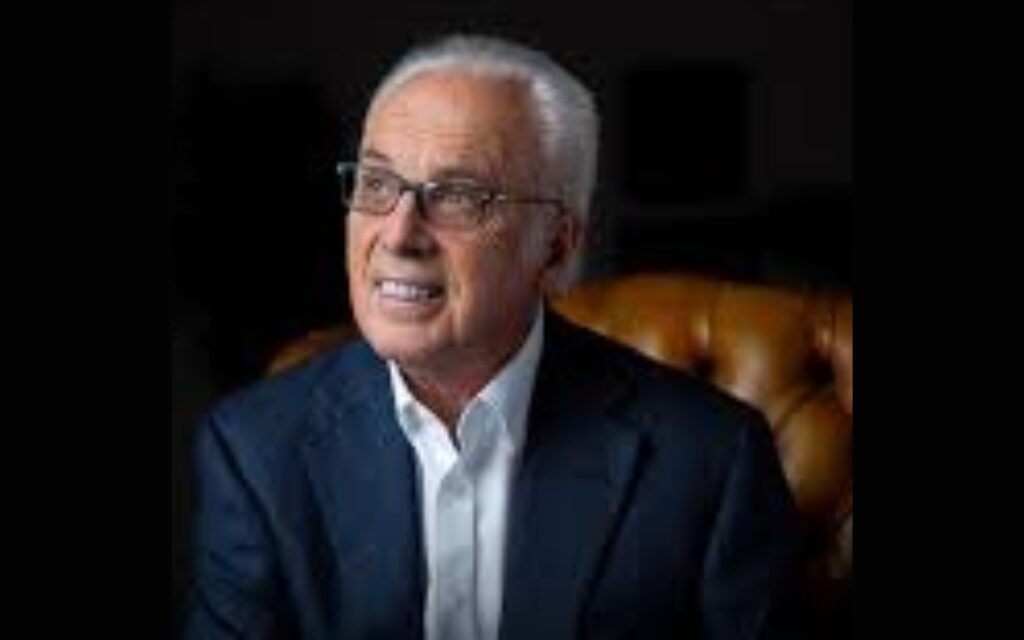This is the second post in a five-part series titled “Jesus in the Old Testament,” showing different ways Jesus appears in the Old Testament.
And beginning with Moses and all the Prophets, he interpreted to them in all the Scriptures the things concerning himself.
Luke 24:27
Theologically speaking, “a type is a special example, symbol, or picture that God designed beforehand, and that he placed in history at an earlier point in time in order to point forward to a later, larger fulfillment.”[1]
Therefore, a type of Christ is a person or thing that resembles or behaves like Jesus.
It comes from the Greek word tupos, which means the mark of a blow, a copy, image, pattern, or prefigure of something or somebody. Paul used it in Romans 5:14 when he called Adam “a type of the one who was to come.” He also used it in 1 Corinthians 10:6; 11, when he said some events in the wilderness “took place as an example for us.”
The New Testament uses a few other Greek words when referring to types.
There is skia, which means shadow or outline. Paul used it in Colossians 2:17 when he said elements of the Mosaic covenants were “shadow of the things to come.” Skia also appears in Hebrews 8:5; 10:1.
Then there is hupodeigma, which means a figure, copy, or model. It appears in Hebrews 8:5; 9:23.
Lastly, there is antitupos, which means typical of, corresponding to, or an image. It appears as antitype in 1 Peter 3:21 NKJV, and as copies in Hebrews 9:24.
Jesus is always an antitype and all his shadows are identified in the New Testament. Hence, we do not decide who or what is a type of Christ; we only discover them. Got Questions says, “typology is determined by Scripture. The Holy Spirit inspired the use of types; illustrations and analogies are the results of man’s study.”[2]
Here are some types of Christ mentioned in the New Testament.
1. Adam (Romans 5:12-21, 1 Corinthians 15:22-45)
Adam was the first man and a type of Jesus, who is called the last Adam (1 Corinthians 15:45). However, the last Adam is greater than the first Adam.
Adam was the son of God (Luke 3:38), but he was created (Genesis 1:27) and came from the earth (Genesis 2:7). Jesus is the only begotten Son of God (John 3:16), He created all things (Colossians 1:16), and He came from heaven (John 6:38).
Adam received life; Jesus gives life (1 Corinthians 15:45)
Adam stood by while his wife sinned (Genesis 3:6), Jesus sacrificed Himself so that His bride wouldn’t sin (1 Peter 2:24).
Adam’s single act of disobedience introduced sin and death into the world. Jesus’ single act of obedience destroyed sin and brought grace and eternal life into the world. (Romans 5:12; 15)
Adam brought condemnation for all men, while Jesus brought justification for all those in him (Romans 5:18).
All those born from Adam inherit his sinful nature, but all those born from Christ inherit his holy nature (1 Corinthians 15:48-49)
2. Moses (Acts 3:22, Hebrews 3:1-5)
Moses is a type of Christ and shares many similarities with Him. For example:
At the time of Moses’ birth, Pharaoh ordered the death of all male Hebrew babies (Exodus 1:22). King Herod ordered the murder of children under two to kill Jesus (Matthew 2:16). They both had to hide to escape infanticide (Exodus 2:2, Matthew 2:13)
Moses was adopted by Pharaoh’s daughter (Exodus 2:10), while Joseph adopted Jesus (Matthew 2:14). Neither was raised by a biological father.
Both acted as intercessors for the people. Moses pleaded to God many times on behalf of the Israelites when they sinned (Numbers 11:2; 12:13; 21:7). And after the Israelites worshipped the golden calf, he offered his life in exchange for the people (Exodus 32:30-33). Jesus also offered His life for the sins of the world (John 3:16, Romans 5:8; 1 John 2:2). He advocates and intercedes for us with God (1 John 2:1, Romans 8:34, Hebrews 7:25).
They both led God’s people out of slavery. Moses freed the Israelites from physical slavery in Egypt, while Jesus freed his people from spiritual bondage to sin and death (John 8:34-36, Romans 8:2).
Furthermore, they were both prophets of God, mediated a covenant, gave commandments, performed miracles, spoke to God face to face (Exodus 33:11, John 10:15), and were both transfigured on a mountain (Exodus 34:29, Matthew 17:2).
But in all these, Jesus is more significant than Moses. Moses was faithful as a servant, but Jesus was faithful as the Son of God.
3. The Passover Lamb (1 Corinthians 5:7, John 1:29, 1 Peter 1:19-20)
In Exodus 12, God sent a series of plagues to afflict the Egyptians so that Pharaoh would let the Israelites go. And the final plague was the death of all firstborn sons in Egypt (Exodus 12:29).
The night before the plague, God instructed the Israelites to select a male lamb without blemish (Exodus 12:5), to kill it without breaking any of its bones (Exodus 12:46), and to apply some of its blood around the house (Exodus 12:7-8). And when God saw the blood of the lamb, He passed over the household, and the destroyer did not enter (Exodus 12:23).
Jesus became the last and greater Passover lamb. He was the lamb of God (John 1:29) perfect, without blemish and sin (1 Peter 1:19). He was crucified with all His bones intact (John 19:33), and by His blood, many people have been saved (Hebrews 9:12).
Moreover, Jesus died around Passover (Mark 14:12). And as the blood of the slain lamb protected the Israelites from God’s wrath, the blood and death of Christ cover us from God’s judgment (Matthew 26:28).
4. The bronze serpent (John 3:14)
One day, the children of Israel felt discouraged and complained against God and Moses (Numbers 21:5). As punishment, God sent fiery serpents among them, and many died from their bites (Numbers 21:6). The people repented from their sins and asked Moses to pray for God’s mercy. When Moses prayed, God instructed him to make a fiery serpent and set it on a pole, and whoever looked at the pole would get healed. (Numbers 21:7-9)
In John 3:14, Jesus likened himself to the bronze serpent, indicating it was a type of Him. The snake was a curse and symbolized Jesus, who became a curse for us (2 Corinthians 5:21).
Like the serpent, Jesus was hanged on a tree (Galatians 3:13), and all who look to Jesus and put their faith in Him will get saved from the sting of death (1 Corinthians 15:55-57).
Also, the serpent was their only means of salvation; just like Jesus is our only way to eternal life (John 14:6).
5. Jonah (Matthew 12:39-41)
Jonah was a prophet from the Old Testament whom Jesus declared a type. Here are a few reasons why:
They were both prophets to gentiles. Jonah’s mission was to call the Assyrians of Nineveh to repentance (Jonah 1:2). Jesus came to call all sinners, Jews and gentiles alike to repentance (Matthew 28:18-20)
Jonah initially disobeyed God’s order and went to Nineveh reluctantly (Jonah 1:3). Jesus willingly answered God’s calling and submitted to His will (Luke 22:42)
Jonah sacrificed himself to save his shipmates (Jonah 1:12), Jesus sacrificed himself to save the world (Mark 10:45)
Jonah spent three days and three nights in the belly of a great fish because of his sin (Jonah 1:17). Jesus spent three days and nights in a tomb because of our sin (Luke 24:46).
Jonah came out from the belly of the fish (Jonah 2:11). Jesus resurrected from death and walked out of the tomb (Mark 16:6)
Jonah announced the destruction of Nineveh would take place in forty days (Jonah 3:4). Jesus taught for forty days after his resurrection (Acts 1:3)
Jonah despised God’s grace towards sinners and was willing to die because of it (Jonah 4:1-3), Jesus showed mercy towards sinners and died to save them (John 3:16)
Jesus is a greater Jonah.
6. High priest (Hebrews 2:17; 4:15–16; 5:10)
In the Old Testament, a priest played the role of mediator between God and the people. The high priest was the leader and the only one who could enter the Most Holy place on the day of atonement.
Jesus is now our high priest because He mediates between God and men (1 Timothy 2:5). But He is a greater high priest for several reasons.
Old Testament high priests were temporary, but Jesus priesthood is eternal (Hebrews 7:23-25).
The Levitical high priest sacrificed daily, but Jesus sacrificed once and for all (Heb 7:27; 9:12).
The Levitical high priests were sinful and also required sacrifice for themselves; Jesus was holy, innocent, and unstained (Hebrews 7:26-27). And while the high priests offer sacrificed animals, Jesus offered himself.
Lastly, Jesus is a greater high priest because His sacrifice and cleansing are forever (Hebrews 10:1-11).
7. Melchizedek (Hebrews 7:1-3; 15-17, Hebrews 6:20)
Melchizedek is a mysterious figure who appears in Genesis 14:18-20 only. But he could have been a type of Christ as Hebrews 7:3 says, “he resembled the Son of God.”
Melchizedek was a king and a priest of God; Jesus is the King and High priest of God.
Melchizedek’s name means king of righteousness, and he was king of peace. Jesus is our righteousness (1 Corinthians 1:30), and the prince of peace (Isaiah 9:6). Even more, righteousness and peace kiss each other in Him (Psalm 85:10).
Melchizedek is without genealogy, no beginning or end (which could mean his origins were unknown). And as there is no record of his priesthood ending, he foreshadows Christ, who is a high priest forever. God even said His Son would be a High priest after the order of Melchizedek (Psalm 110:4, Hebrews 5:6), which is different from the priesthood of the Levites.
It is also possible that Melchizedek was a Christophany, especially if the author of Hebrews meant Melchizedek literally had no beginning or end of days. But whether he was a Christophany or a type, Melchizedek foreshadowed the priestly and kingly ministry of Jesus in the New Testament.
Grace and peace to you!
Works Cited
[1] Crossway Bibles. (2007). ESV: Study Bible : English standard version. Wheaton, Ill: Crossway Bibles.
[2] Got Questions “What is Biblical Typology” retrieved from https://www.gotquestions.org/typology-Biblical.html









